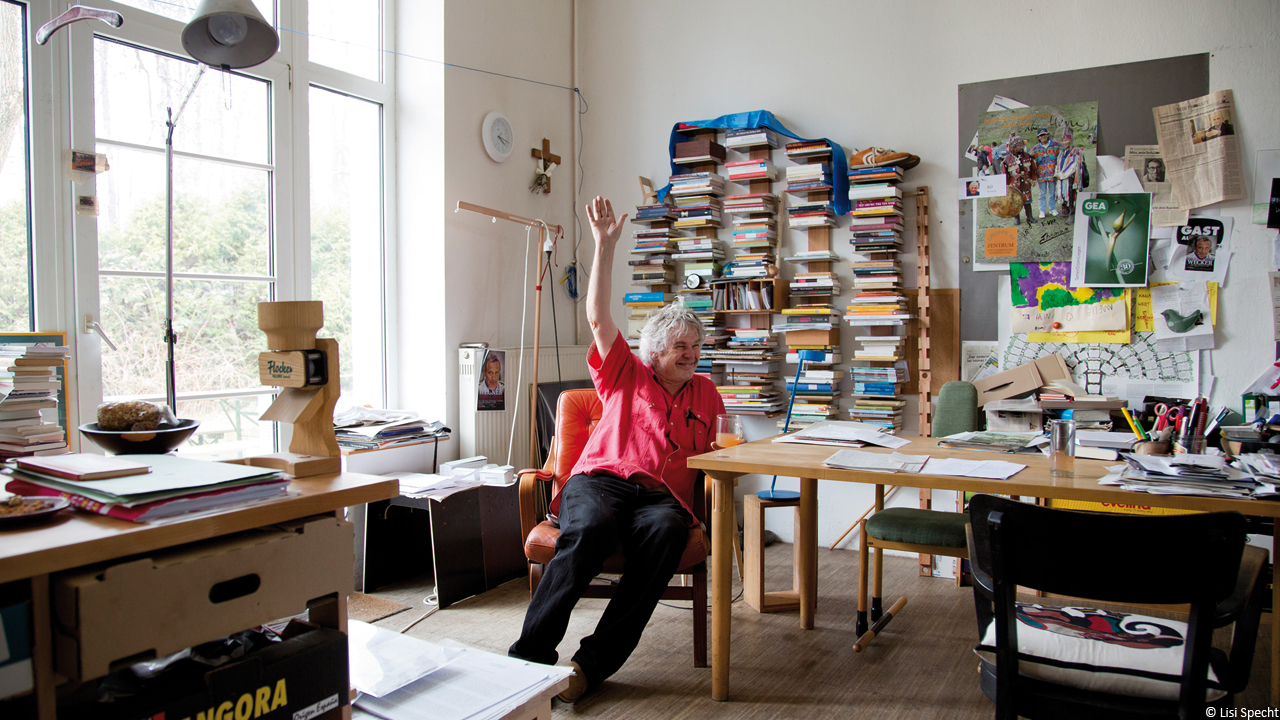Have you begun to really live at last, or are you still officing around?
By Wojciech Czaja, 30.05.2018

Why are so many workspaces turning their backs on the classic office and behaving as if they were living rooms? The trend is an inescapably essential syndrome of the young home-office generation. It has already spread through the whole world of work. Wojciech Czaja weighs up the risks and potentials here.
”I haven’t got a proper office, nor do I have a real living room, since everything seems to go on one way or another for me in a single room,” says Heini Staudinger. The 61 year old entrepreneur lives and works in Schrems where he is head of the shoe and furniture workshop GEA in the dramatic landscape of the Austrian Waldviertel. When you stride through the seemingly endless lengths of his production halls where leather and cloth are hoarded and profiles produced you can sense a comfortable and homely feeling developing. “I have never had an apartment of my own in all the 20 years that I have lived here in Schrems,” Staudinger confides. “I don’t miss it either. Instead of that I always think I live in a shared home, now with 7000 square metres of space and over 170 other residents.”
The headquarters from which Staudinger directs his footwear and furniture empire (he now sells successfully everywhere in Europe), is a kind of living room-cumkitchen niche, in which all sorts of things have accumulated. The place where he sleeps is in the warehouse next door. And whenever he feels the need for a living room couch and table he simply goes upstairs to the first floor where amount of furniture awaits use in the GEA showroom. “A mix of living and working is not always very comfortable of course,” Staudinger admits. “Sometimes I have simply had enough and then I stick a notice on my door: Do not disturb!”
Heini Staudinger is by no means the only one of his species. The phenomenon of the atmospheric mix between living and working is no longer limited exclusively to the home office, in which so very many people – especially the young and self-employed – literally tumble daily straight out of bed and into the office chair.
“We spend a lot of time in the office so it is entirely legitimate when our workplace sometimes reminds us of our own four walls,” Bernhard Kern, CEO of the office planning specialist Roomware Consulting GmbH says. “But in the daily grind it is generally the case that you can’t do a vast amount to generate a living room atmosphere with the filing cabinets and shelves, grid lighting and acoustic panels at your disposal.” That is why the magic touch of change is in practice generally restricted to a few selected areas only such as lounge, cafeteria and withdrawal area. But whatever the case Kern says, a homely atmosphere at the workplace must be equally as relaxed and with the bonus air of entrepreneurial personal responsibility. Anything else would be an empty facade.
We spend a lot of time in the office so it is entirely legitimate when our workplace sometimes reminds us of our own four walls.
Spannberger examines the potential a room has and how to make the best use of it in the room value analysis which she has developed. Using a qualitatively advanced questionnaire technique she hunts down concepts and needs and supports her customers in finding the right design for their rooms – not least in their workspace. “I have nothing against an office with homely design, but I do stand for having this coordinated individually with the users. Because if you do not do this it leads to employer branding, which although it may be well meant, bypasses the needs of the employee.”
The serious intentions behind design possibilities aimed at homeliness and comfort range from colour through materiality to the senses of touch and smell and the lighting mood achieved. The Viennese architect Pia Anna Buxbaum is a specialist for precisely these components. “You need to be very careful, especially when dealing with big areas and match up colours and materials very carefully. A homely atmosphere is created when the working room has warm colours, natural surfaces and warm light surfaces that are as natural as possible.”
The right acoustics are an important factor for comfort. “More and more offices are being designed on an open plan basis,” the architect Harald Höller, one of three equal partners in SUE explained. “If only for this reason you must take care to prevent this all from getting out of hand as a complete mood muddle in the office.” SUE consistently brings fluffy accents in felt to its office and interior design projects. The public notary chambers of Prayer Rahs have cupboard surfaces and seating berths covered in colourful felt panels. The doors at the premises of tax consultants Geyer & Geyer have bright red upholstered felt. The recently completed studios for the television station W24, even have pink, red and violet curtains draping the interview room.
”Felt? Yes of course, there’s no way around felt,” Heini Staudinger says. ”It is absolutely essential for shoes and slippers and of course for furniture too, so why not in the living room or in the office too? Or in a living room office!”




